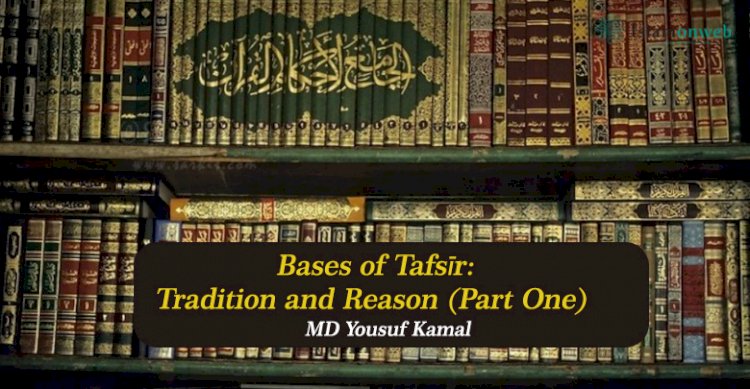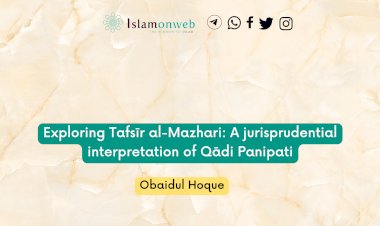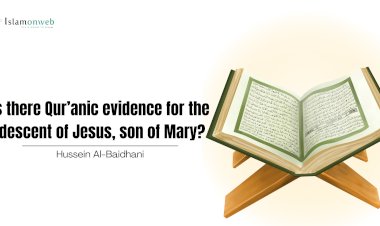Bases of Tafsīr: Tradition and Reason (Part One)
Introduction
The noble book, Qur’an, is the simplest book to read and composite to understand its sound meanings. To tackle this complexity the interpretation continued from the very first day the Qur'an was revealed to Prophet Muhammad ﷺ, and he began to explain all to his companions. That interpretation was technically termed ‘exegeses’. Its methodologies evolved with some changes in the course of history. Those methodologies are broadly divided into two types; the first one is Al-Tafsīr bi al-Ma'thūr (tradition-based exegeses, i.e. the method of commenting on the Quran using traditional sources) and another is Al-Tafsīr bi al-Ra'y, commonly known as tafsīr bi-al-dirāyah (reason-based exegesis, i.e., the method of using one's independent rational reasoning and mind (ijtihad) to form an opinion-oriented interpretation).
The first type was well accepted at all points while the latter was disputed over and became the centre of debates for years. The debates were concerning the use of reason-based interpretation, Tafsīr bi ra’y made by successors[i] and then descendants, not of companions. The companions’ use of their reason and intellect is counted as Ma'thūr. For example, the interpretation of Ibn Abbas on the verses of Surah Nasr, where he says it means ‘the end of the prophet is near’[ii], was not disputed at all but was taken as an encouragement to interpret so.
The reason-based exegesis is a mixture of traditions and reasons because an interpreter is a knowledgeable scholar who has acquired all the needed sciences, then with the help of that knowledge, he provides interpretations of a verse.
Exegetical types of the Quran: Historical Perspective
The exegesis tradition of the Quran has developed historically from the Prophet’s era. The development stages are numerically five, wherein the first four stages of tradition-based interpretation developed and the 5th stage marked as commencement of reason-based exegesis’. Those stages are as follows;
- The first stage was ‘the oral period’; the Companions attained the Qur’anic exegesis from the Prophet (ﷺ) or other companions, while successors were from companions. It is founding state of Al-Tafsīr Bi al-Maʿthūr.[iii]
- The second stage was ‘the codification period’; even the codification of Hadith, not of the exegesis per se. Rather it has been made as one of the chapters of hadiths[iv].
- The third stage was the climax of Tradition-based Tafsīr’s development. Here the Qur’anic exegesis codification began to be written independently. The prominent scholars of this stage are Ibn-Majah, Al-Nisaburi, Ibn-Hibban, and others[v].
- The fourth stage is similar to the previous phase except for the summarisation of long-chained transmission (Sanad) developed concerning Matan only. This resulted in the problem of a mixture of Daʿīif (weak) hadith and Ṣaḥīh hadith (valid)[vi].
- The fifth stage is the last and final Qur’anic exegesis development era which extended from Abbasids to modern times. Here the interpretation based on Ra’y appeared[vii], so is the controversies over its legitimacy.
Later, various approaches were used for interpreting the Qur’an such as linguistics based (Al -Basith of Wahidi), theology and philosophy based (Mafatihul Ghaib of Al-Razi), Islamic jurisprudence based (Qurtubi and Jassas), and so forth.
Quranic Exegesis’s Classifications
In a wide sense, Quranic exegesis can be categorised by type, method, and style. It is divided into 2 in terms of type,
- Tafsīr bi Al-Ma’thūr
- Tafsīr bi-Al Ra’y.
And in terms of methods, it has 4 categories:
- Brief (Global) (Ijmali)
- Analytical (Tahleeli)
- The comparative (Muqarin)
- The Thematic (Mawḍūʿī).
And in terms of style, it has several clusters like literature, jurisprudence, theology, philosophy, and other sciences[viii]. Here, the study presents only the 1st kind with the main focus on Tafsīr based on reason.
Meaning of Al-Tafsīr bi Al-Ma’thūr (Tradition-based exegesis)
In Al–Tafsīr bi Al –Ma’thūr, ‘Ma’thūr’ is a passive participle derived from the verbal noun ‘Athara’ which means to trace, to mark, to report and to transmit[ix] or to quote a report and narrate.[x] And the interpretation based on tradition, as Qattan defines it, is an interpretation based on valid narrations of the Quran, hadith, and opinions of companions and senior successors.[xi]
Abu Hayyan defines it as a discipline that examines the recitation of the words of the Quran, their significations, connotations studying alone or in context, and meanings attributed to the particular context relying on needed sciences like recitation, morphology, rhetoric, literal use of language, so the abrogation and others.[xii]
In the early stages, the words Tafsīr and Ta’wil were used with the same meaning, but later, Tafsīr became a synonym of tradition based while Ta’wil came to be known as associated with Reason-based exegesis.[xiii]
Al –Tafsīr Bi Al–Ra’y (Reason-Based Exegesis)
Lexicology
Ra’y is a verbal noun that means ‘to see with eyes, with the mind to reflect’.[xiv] This word is also the synonym for opinion, view, and belief, which usually involves analogy and intellectual exertion.[xv]
In the Quran, this term is used in different forms (past, present, and future) for the same meaning. In Prophetic narration (Hadith) ra’y is used in 2 senses; one is ‘personal opinion’ in the absence of clear indication from the Quran and Sunnah. And second is equivalent to Qiyas (analogical deduction). Generally, as Ali Suleiman Ali indicated, the term ra’y had been used to mean Ijtihad, personal view or opinion, Qiyas, and belief (I’tiqad).[xvi]
Definition
Al –Tafsīr Bi Al–Ra’y means “to interpret the Quran by using reason”. This kind is often called Al-Tafsīr bi –al-‘Aql or Al-Aqli and referred to as Al-Tafsīr bi al-Dirayah.[xvii] Manna’ Al Qattan states it as ‘an interpretation in which the commentator explains the Quran based on his understanding and his exploration of the Quran only using his intellect’ (Al –ra’y al Mujarrad).[xviii]
Al–Dhahabi defined it "Interpretation of Quran by self-exertion after acquiring the knowledge of needed sciences like Arabic language, literal and metaphorical use with the help of pre-Islamic Arabic poetry, as well as occasions of revelation and so the abrogation, etc.”[xix] Al- Zarkashi in his book “Al-Burhan fi ulum al-Quran’’ has given a relevant definition.
Endnotes:
[i] There are disputes over taking the successors’ opinion as Tafsīr Bi Al-Ma’thūr, or taking as Al Tafsīr Bi Al-Ra'y between scholars, for example Qattan supported it and Zurqani omitted them from Ma'thūr.
[ii] Al-Tabari, Abū Ja'far Muḥammad b. Jarīr. (2000). 'Jāmi' al-bayān fi ta'wil ay al-Qur'ān', Bayrūt: Dār al-Fikr., Vol.24, P.669
[iii]Al–Dhahabi, Muḥammad Husayn, 'al-Tafsīr wa al-mufassirun', Cairo: Maktaba Wahbah (n.d.), vol.1, p. 104
[iv] Ibid, P. 104
[v] Ibid, p.104-105
[vi] Ibid, p.107
[vii] Ibid, p.108-1
[viii] Ilyas, Yunahar, ‘Kulliyah Ulumul Quran’, Yogyakarta, Itqan publishing (2014), p.270-2071
[ix] Ali Suleiman Ali, ‘Qur'anic exegesis’. IIT, Books in-brief series (n.d.) ,p.06
[x] Mohammad Mujid Al Deen Al Firozabadi, ‘Al-Qamūs Ul Muhīth, VIIIth Edition, Beirut (2005).p.341
[xi] Qattan, Manna’ al-Khalil, 'Mabahis Fī Ulūm al-Qur'ān', Maktabah Al-Ma'arif (2000). p.341
[xii] Al-Suyuṭī, Jalāl al-Din, ‘Al-Itqān fi 'ulum al-Qur'an, ed. Muhammad Abu-el-Fadl Ibrahim’, Vols. 1-4; Cairo: Al-Hay'ah al-Misriyyah al-'Āmmah li al-Kitāb (1974-1975), vol.4 p.194
[xiii] Abdullah Saeed, ‘Interpreting the Qur’an Towards a Contemporary Approach’. London; Routledge. (2006), p.59
[xiv] Ibn Manzur, ‘Lisanul Al- ‘Arab’. Beirut: Dar sadir, (1955-1956) Vol.14, p. 299-300.
[xv] A. S. Ali, p.06
[xvi] Ibid. p.13
[xvii] Dirayah is interpreted as knowledge.
[xviii] ‘Riwayah’ has the same meaning as “Traditional Narration”.
[xix] Zarkashi, Badr al-Din Muḥammad b. 'Abd Allah, 'al-Burhān fi ‘ulum al-Qur'ān', Bayrūt, (1957), vol.1-2, p.148
About author: Md Yousuf Kamal is from Bihar, Degree First Year student, Department of Qur’an and Related Sciences, Darul Huda Islamic University
Disclaimer
The views expressed in this article are the author’s own and do not necessarily mirror Islamonweb’s editorial stance.
























Leave A Comment